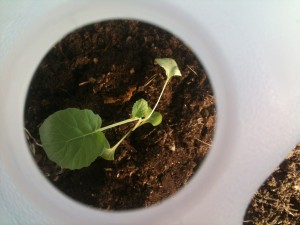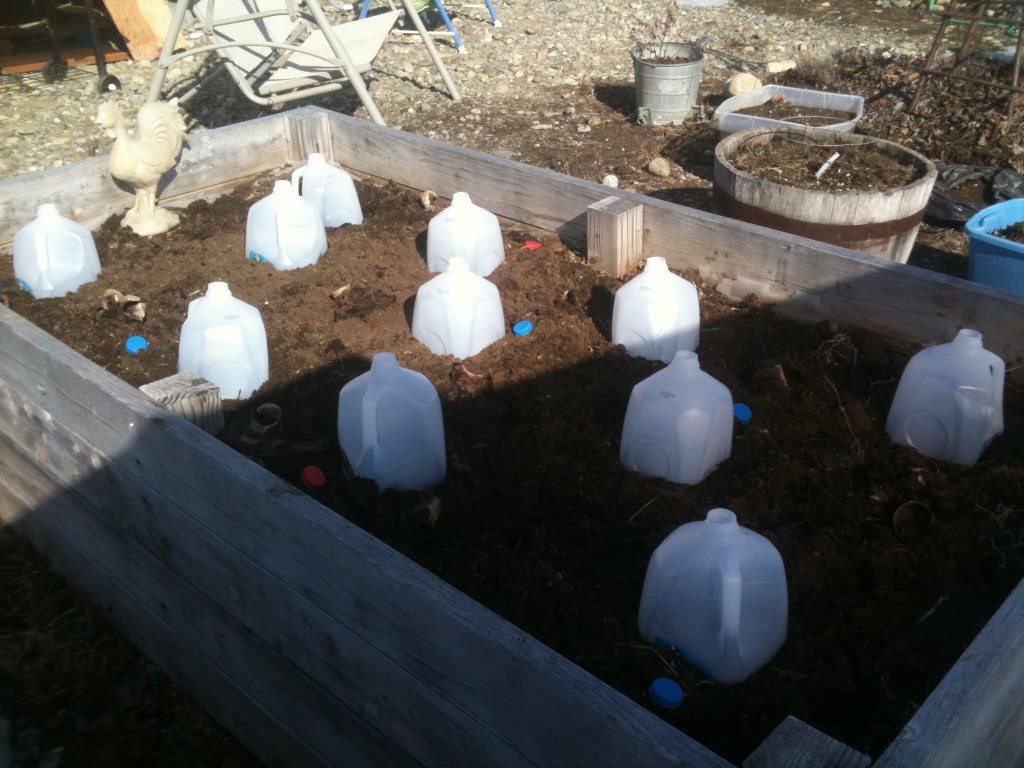To say I’ve been lacking in gardening inspiration the last few months would be an understatement, at the very least. I’ve experienced a lot of Alaskan winters, but this one has just seemed to drag on and on, more than most any other that I can remember.
Maybe it was the late arrival of the white stuff, or the fact that we’re into May now with the lakes and rivers still frozen, but whatever the case, I’m impatiently waiting it out with seedlings that REALLY need to be planted.
I started Broccoli, Cabbage and Cauliflower seedlings the second week of April. This is normally perfect timing as I tend to have the garden planted by the second or third week of May. While my Cabbages and Cauliflowers are content with their situation, the Broccolis were completely out of control.
They needed more light, they needed more room, and more importantly, they needed cooler temperatures than my living room can provide! I realized that if I didn’t do something, they were all going to die, so I decided to use all those milk jugs I’ve been saving and make some hot caps. I cut the bottom 2 inches or so off of each of the milk jugs so that the sides no longer curved in at the bottom, and they were ready to go.
The hot caps have two purposes. The first is to act as an improvised greenhouse, providing a warmer climate for the seedlings. The plastic walls reflect extra light and warmth to the emerging leaves, and during the day the tops are left off to allow for airflow and temperature adjustment.
The second purpose is to provide protection from overnight temperature lows. The tops are replaced in the evening to hold in the warmer air and help fend off the potential frost.
This is the first year that I’ve used any sort of hot cap, mainly because I’ve never had to. I fully expect that some of these seedlings will not make it, but that’s better than all of them dying inside in their cramped conditions. For now, this little guy looks happy, and has survived several nights outside!
Any of the seedlings that do not survive will be replaced by a new seed sown directly into the soil. I’m curious to see if the seedlings will stay ahead of the direct-sown seeds, or if the growth will even out before the broccoli heads mature.
My hope is that these seedlings mature fast enough that I can get a second set into the ground for a fall harvest, which means starting more seedlings sometime in early July. Those seedlings won’t need the hot caps, but we may be battling the heat when it comes time to plant them, which means finding a whole new way to control the garden climate.
It looks to be another typical gardening year in Alaska… trying to cram as many plants into the vegetable garden as we can before the fall frost shuts down the whole operation.
Jamie shares her thoughts and ideas as she explores organic gardening and permaculture in Big Lake, Alaska. She writes about chemical-free gardening in a cooler climate, saving energy or using alternatives, cooking from scratch, and living a more frugal lifestyle.
susitnafarm.blogspot.com






